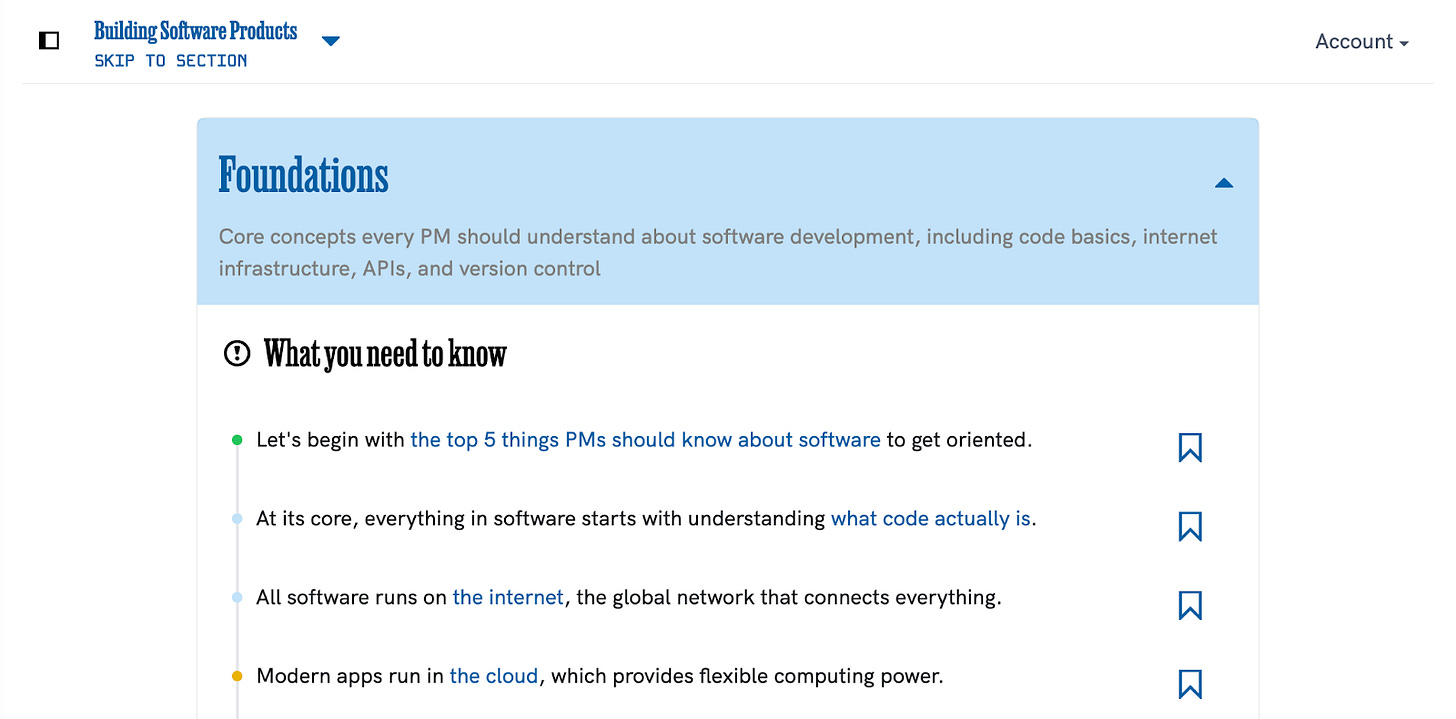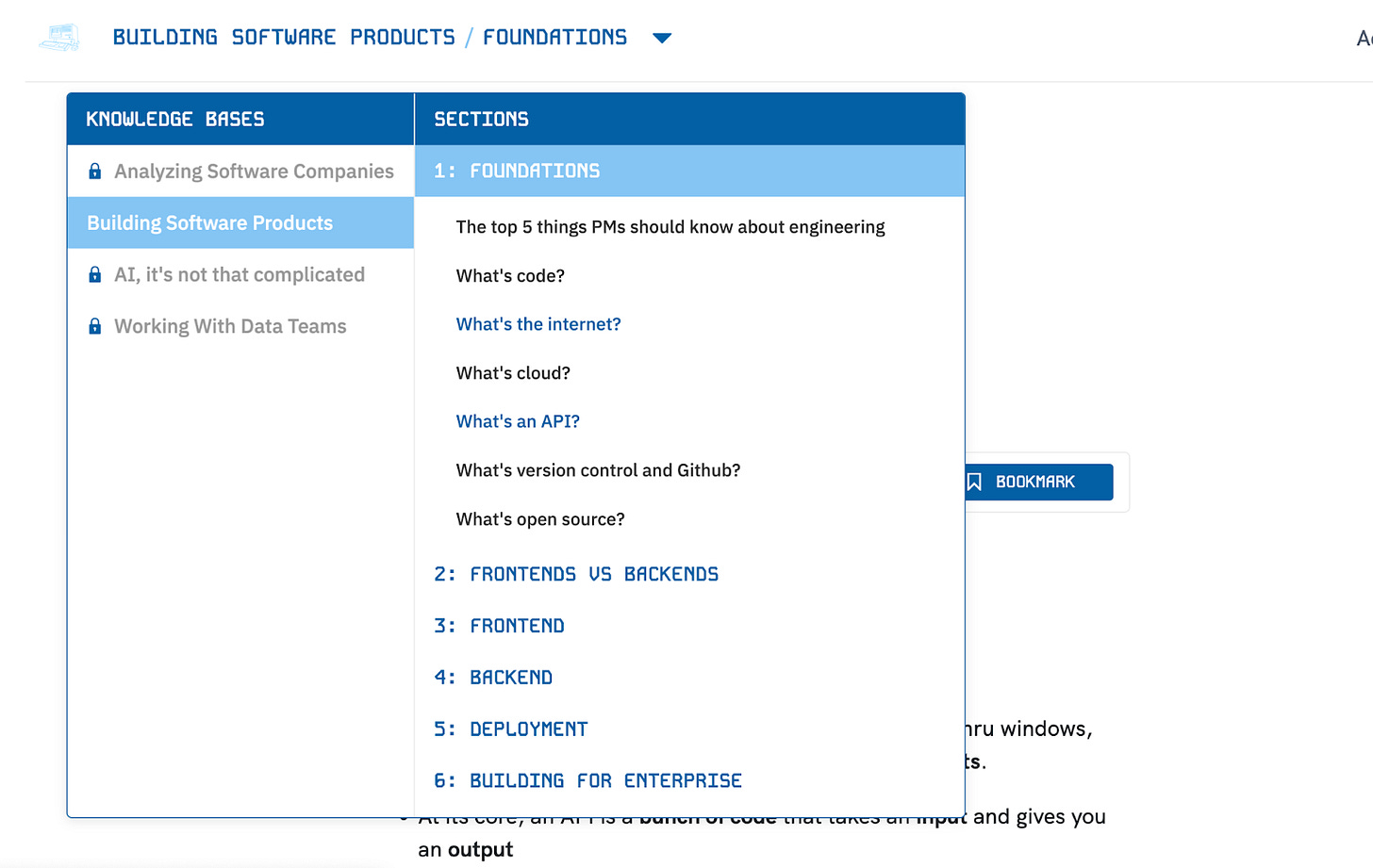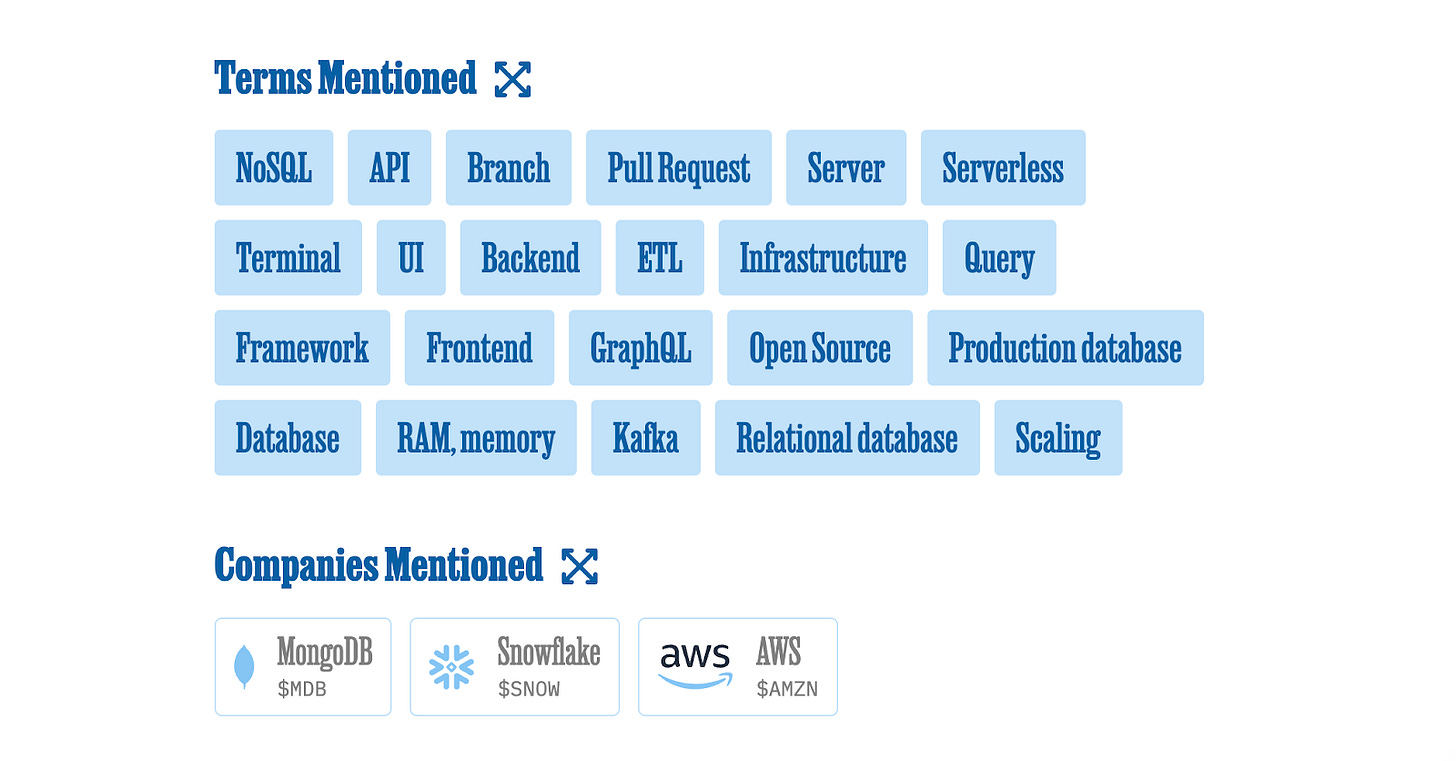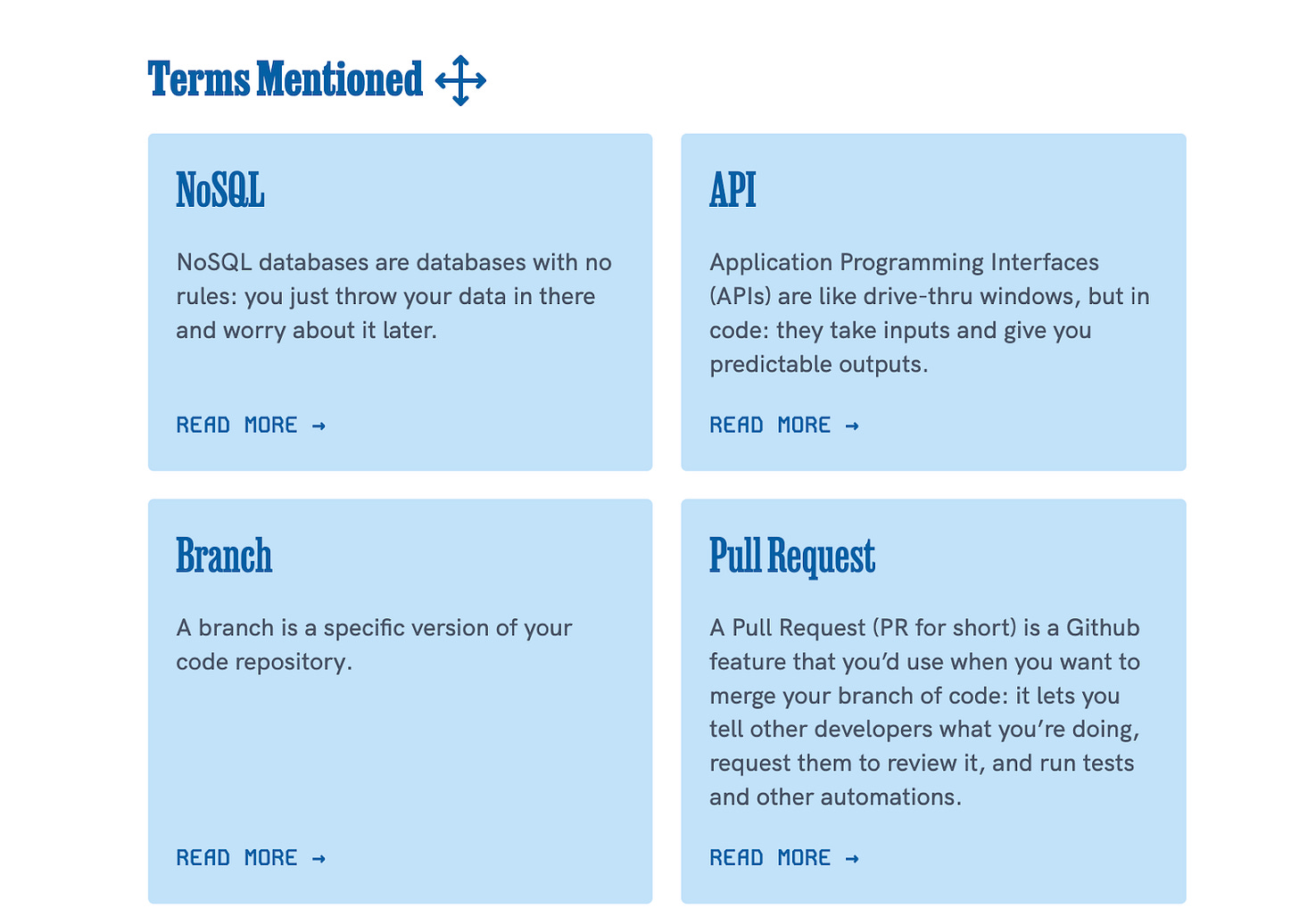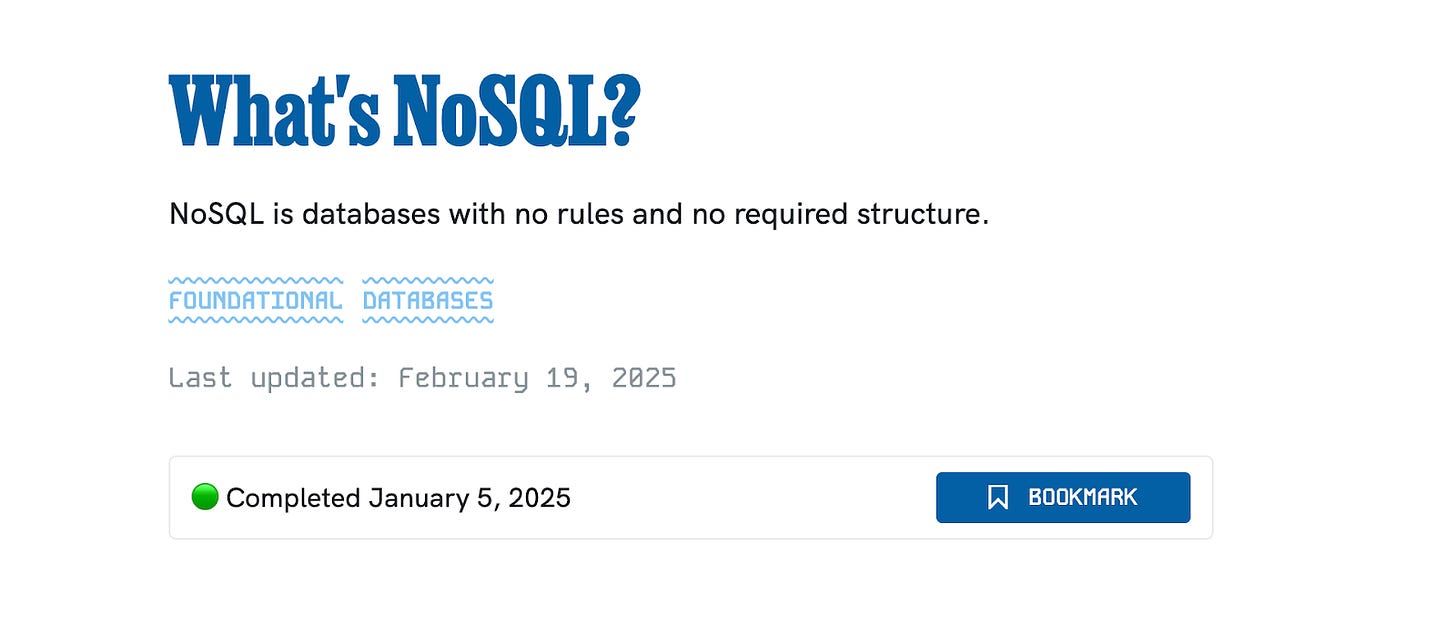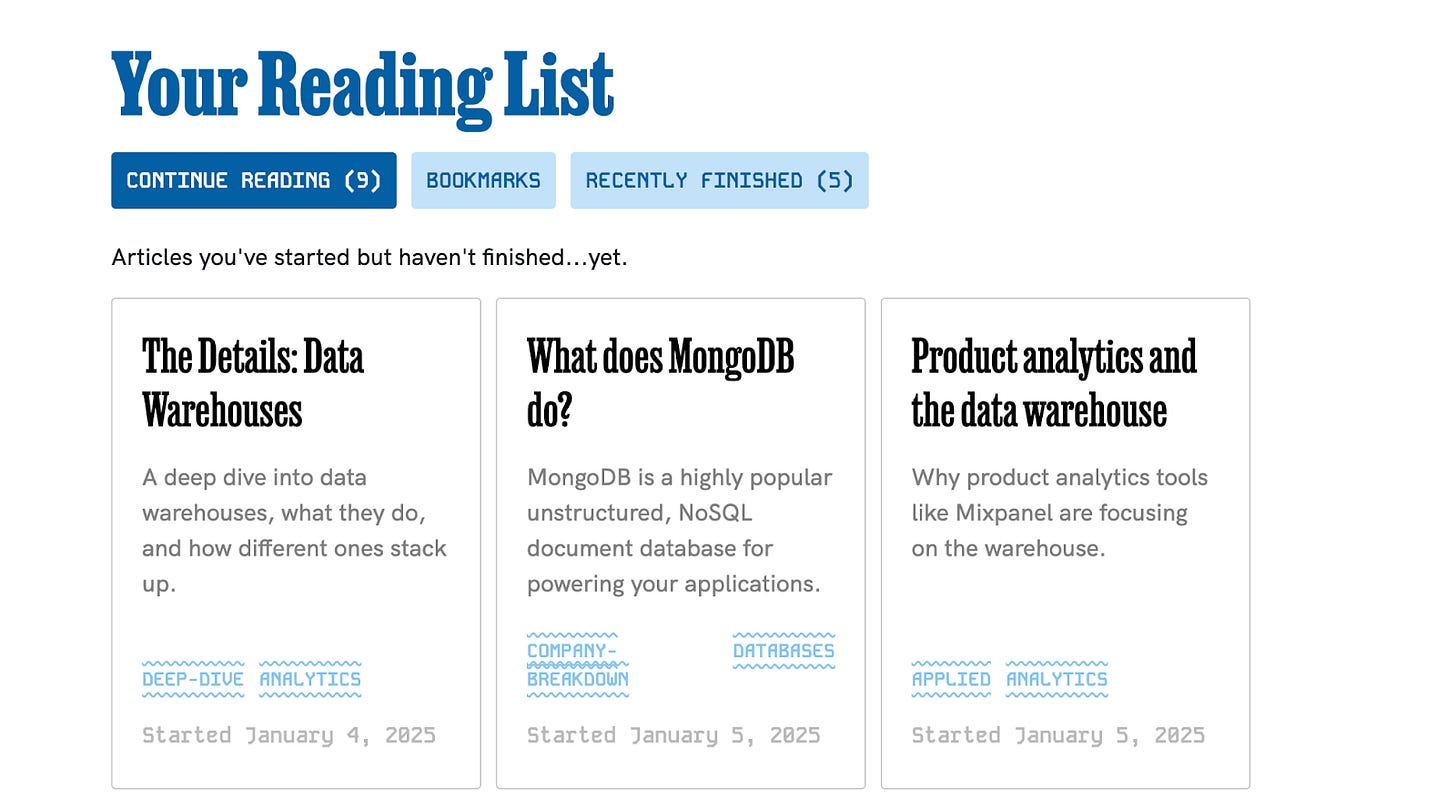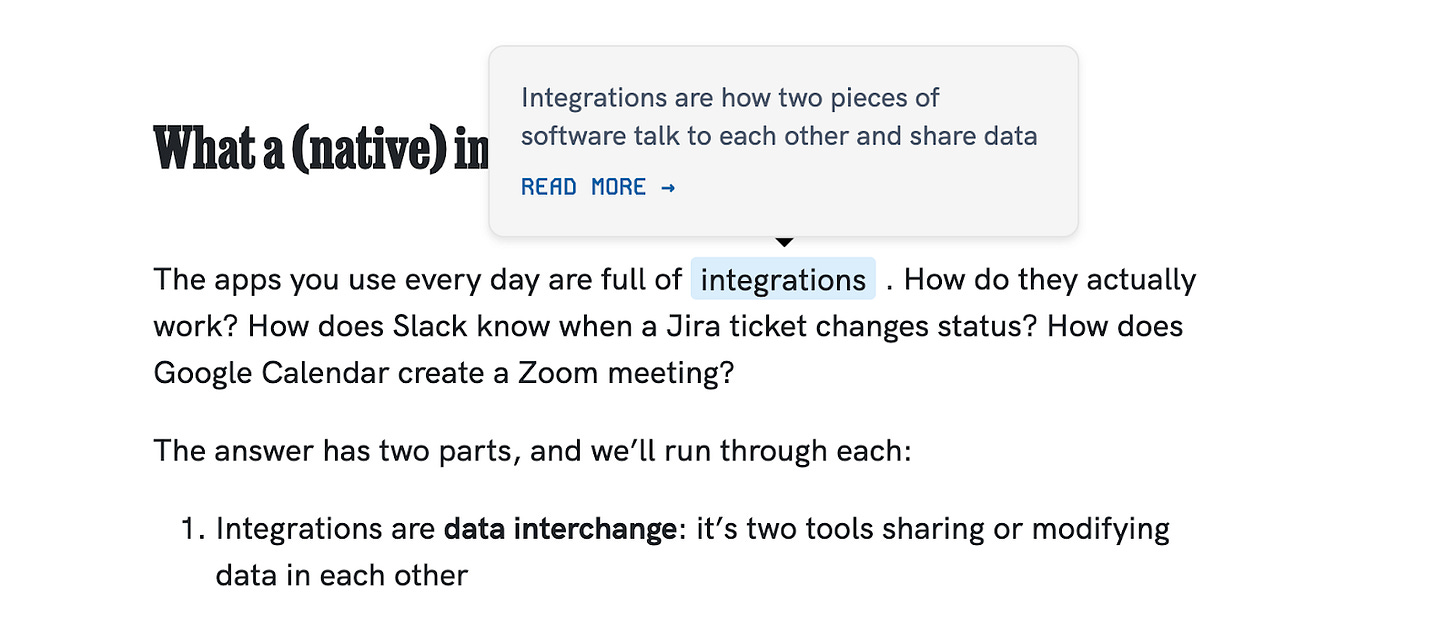Hello there,
Today I am incredibly excited to announce a new Technically product and some important changes to how this whole thing works. For the past year, in a top secret underground lab, my team has been working on a brand new app that we’re calling Technically 2.0. It’s going to completely change how you learn about and understand the software and AI around you. Here goes…
1) Introducing Technically 2.0
70,000+ professionals use Technically to learn more about APIs, Snowflake, and everything in between. I started this thing as a newsletter 5 years ago, but the newsletter format doesn’t really make sense for how all of you use this thing. I’ve heard from all of you that the 100+ post archive is too hard to navigate. Where do you start? How do you pace yourself, and figure out what’s most important?
So we built an app that’s going to make it much easier to learn and retain things like how LLMs work. You can get started on the homepage here.
Here are a few highlights:
Knowledge bases
Everything in Technically 2.0 is organized into knowledge bases designed for specific reasons you might be trying to level up your technical knowledge. If you’ve used our learning tracks in the past, think of a knowledge base as a learning track on (legal) steroids.
Building software at work, and trying to figure out how to work better with your engineers? There’s a knowledge base for that (PMs and engineers).
Struggling with what an LLM is and how to use them? There’s a knowledge base for that.
Trying to work with data and understand the mechanics of analytics and warehouses? There’s a knowledge base for that.
And if you’re on the sell side or buy side and trying to understand why developers pick MongoDB over Elastic, there’s a knowledge base for that.
Knowledge bases organize everything you need to know into a straightforward, sequential learning track. We automatically keep track of what you’ve started, finished, or haven’t seen yet.
Whenever you’re reading a post inside a Knowledge Base, you can easily move around to other relevant topics and follow your curiosity.
Networked terms and tools
Each Technically post is now supercharged with a Wikipedia, follow your curiosity style knowledge graph.
You can see terms mentioned in the post and any companies or tools too. And each of these little cards is expandable, so you can learn about them without needing to leave the page.
Bookmarks and your reading list
In my experience, getting more technical is a lifelong pursuit. Technically 2.0 helps you along that journey by helping you keep track of what you’ve read, what you need to finish, and what you want to start soon. On top of every post, you can see if you’ve read it before, plus bookmark it for later:
Your account page has a reading list, which tracks all of your activity. You can pick up where you left off, see what you’ve already finished, or check out that bookmark:
Highlights
One of the hardest things about learning about software is finding exactly the post you needed to explain what NoSQL is, only to find 17 more terms that you’ve never heard of. In Technically 2.0 major terms are highlighted – mouse over and you can see a quick explanation, plus a link to read more.
There’s so much more in the app and coming down the line, too – we’re building the learning platform to help people learn about software.
2) Technically 2.0 structure and pricing
Technically 2.0 pricing is organized on a per knowledge base…basis. Each knowledge base is priced slightly differently:
Building software products: $199, one time fee
AI, it’s not that complicated: free!
Working with data teams: $149, one time fee
Analyzing software companies: $1999 per year (includes access all other KBs)
We’re pricing some of these as a one time fee instead of a subscription, and we think that’s better aligned with how people actually use Technically. One payment gets you access to the entire knowledge base in perpetuity, plus we’ll continue adding new content over time as stuff comes up.
Prices are also higher. We’re charging a good deal more than the Substack because of how much better Technically 2.0 is, and how much more effective it will be at helping you learn what you need.
3) What’s happening to the Substack
The Substack is not going anywhere, but we’re changing up how it works.
The Technically Substack is going to have:
Monthly updates (or sometimes more frequent updates) about Technically. We’ll include any new content over on Technically 2.0, comments and breakdowns of what’s going on in the news, and bits about software you need to know.
Sponsored posts, of which we have a ton of interesting ones coming up this year about AI and how it works.
If you’re interested in Technically 2.0 but not ready to switch over, stick around on Substack to see what’s coming down the pipe.
Going forward we will not be accepting any new paid subscribers on the Substack. I’m beyond excited about Technically 2.0 as the future here, and I think you will be too. Give it a try here.
Feel free to respond with any thoughts, concerns, or comments. This has been in the works for a long time and I’m jazzed to finally be talking about it.
See you on the internet,
~ Justin



